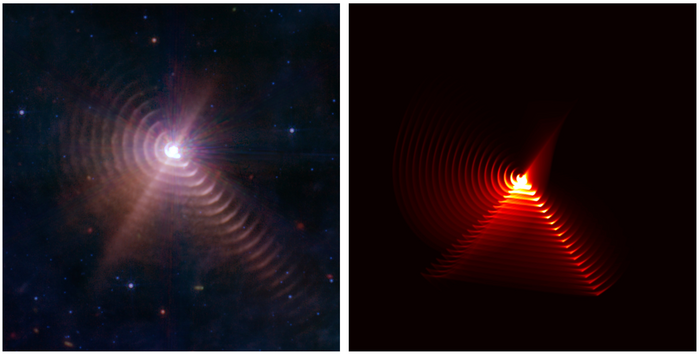Scientists finally explain bizarre space object that led to speculation about aliens
Images described as ‘bonkers’ when they were first revealed
A space object so strange that some suggested it must be alien has finally been explained.
Earlier this year, the James Webb Space Telescope took a picture of a a distant star surrounded by neat, circular ripples. The image was immediately hailed as “bonkers” by experts, and led to speculation that it could show a structure created by aliens, stretching many light years across.

Now scientists believe they have found an explanation for the strange structures around the star known as WR140. And while it is not quite as unusual as aliens, it is still very odd.
The 17 concentric rings apparently circling the star are in fact a series of “dust shells”, scientists write in papers published today in Nature and Nature Astronomy. They are made out of the interactions of two stars – one of them dying – that are locked together in orbit.
The star is regularly throwing out a ring of smoke, which are then shunted around by interstellar wind.
“Like clockwork, WR140 puffs out a sculpted smoke ring every eight years, which is then inflated in the stellar wind like a balloon,” said Professor Peter Tuthill from the Sydney Institute for Astronomy at the University of Sydney, who is a co-author on both papers.
“Eight years later, as the binary returns in its orbit, another ring appears, the same as the one before, streaming out into space inside the bubble of the previous one, like a set of giant nested Russian dolls.”
The WR140 binary is actually made up of a huge, dying Wolf-Rayet star, and its companion – which is an even bigger supergiant. The two are stuck to each other in an eight-year orbit.
Together, the two create powerful, intense winds, pushing around the dust clouds that are then visible within the telescope. (The findings also allowed scientists to study the effect of light as it pushes dust around in space, which is also described in the same research.)
“In one sense, we always knew this must be the reason for the outflow, but I never dreamed we’d be able to see the physics at work like this,” said Professor Tuthill. “When I look at the data now, I see WR140’s plume unfurling a like giant sail made of dust. When it catches the photon wind streaming from the star, like a yacht catching a gust, it makes a sudden leap forward.”
Join our commenting forum
Join thought-provoking conversations, follow other Independent readers and see their replies
Comments
Bookmark popover
Removed from bookmarks